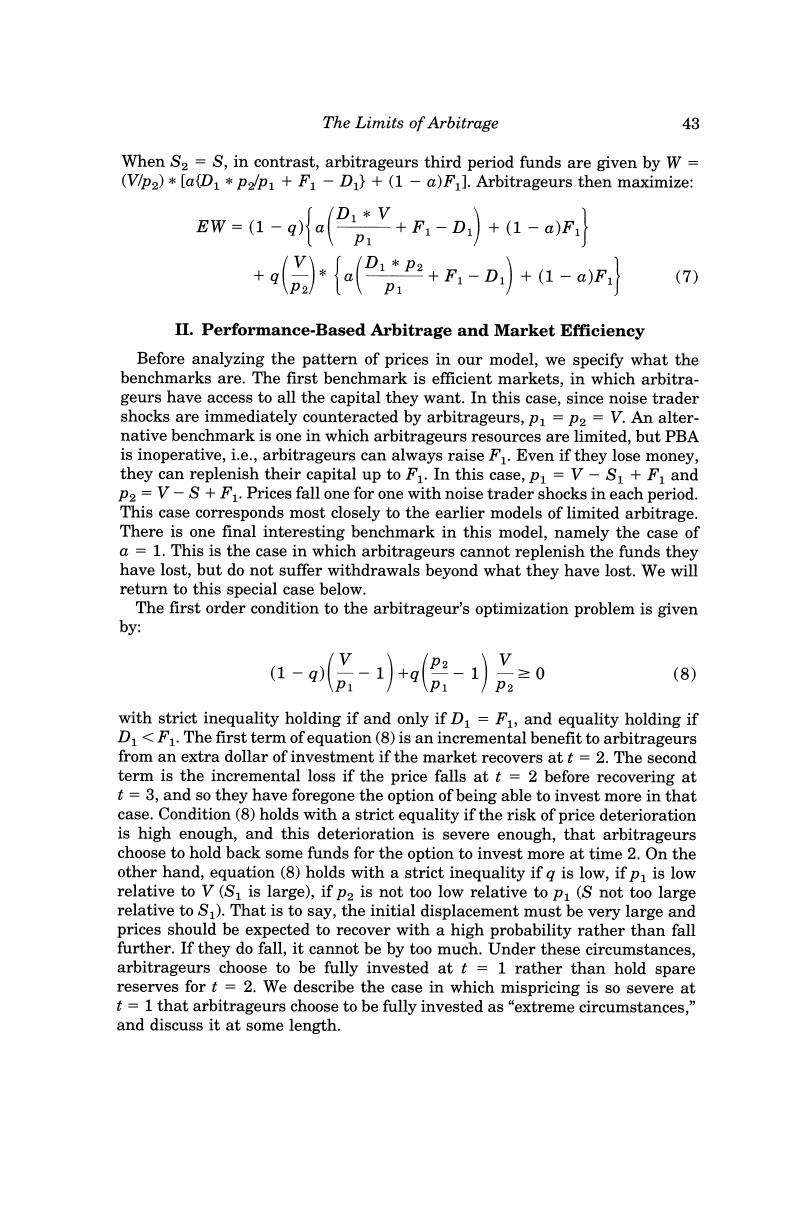正在加载图片...

The Limits of Arbitrage 43 When S2=S,in contrast,arbitrageurs third period funds are given by W= (V/p2)*[a(D1 p2p+F-D}+(1-a)F l.Arbitrageurs then maximize: Ew-(1-q) D1*V +F1-D+(1-a)F1 D)-o (7) II.Performance-Based Arbitrage and Market Efficiency Before analyzing the pattern of prices in our model,we specify what the benchmarks are.The first benchmark is efficient markets,in which arbitra- geurs have access to all the capital they want.In this case,since noise trader shocks are immediately counteracted by arbitrageurs,p=p2=V.An alter- native benchmark is one in which arbitrageurs resources are limited,but PBA is inoperative,i.e.,arbitrageurs can always raise F.Even if they lose money, they can replenish their capital up to F1.In this case,p1=V-S1+F and P2-V-S+F1.Prices fall one for one with noise trader shocks in each period. This case corresponds most closely to the earlier models of limited arbitrage. There is one final interesting benchmark in this model,namely the case of a =1.This is the case in which arbitrageurs cannot replenish the funds they have lost,but do not suffer withdrawals beyond what they have lost.We will return to this special case below. The first order condition to the arbitrageur's optimization problem is given by: (1-9 (8) with strict inequality holding if and only if D=F1,and equality holding if D1<F1.The first term of equation(8)is an incremental benefit to arbitrageurs from an extra dollar of investment if the market recovers at t =2.The second term is the incremental loss if the price falls at t 2 before recovering at t =3,and so they have foregone the option of being able to invest more in that case.Condition(8)holds with a strict equality if the risk of price deterioration is high enough,and this deterioration is severe enough,that arbitrageurs choose to hold back some funds for the option to invest more at time 2.On the other hand,equation(8)holds with a strict inequality if g is low,if p is low relative to V(S1 is large),if p2 is not too low relative to p(S not too large relative to S).That is to say,the initial displacement must be very large and prices should be expected to recover with a high probability rather than fall further.If they do fall,it cannot be by too much.Under these circumstances, arbitrageurs choose to be fully invested at t 1 rather than hold spare reserves for t=2.We describe the case in which mispricing is so severe at t =1 that arbitrageurs choose to be fully invested as "extreme circumstances," and discuss it at some length